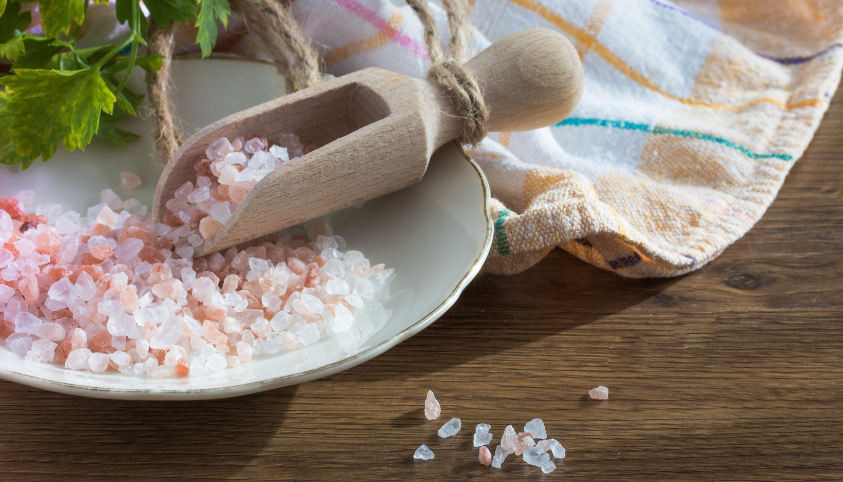


The relationship between salt and diet has long been a source of debate in the nutrition community. Although salt, a necessary mineral, is important for supporting body processes, excessive consumption has been related to health problems. In addition to delving into the complex relationship between salt and our diets, we'll also examine the special advantages of Celtic salt and Himalayan salt. In this blog, we want to dispel common misconceptions, highlight key information, and illuminate the potential benefits of these natural salt substitutes.
Myth 1: All Salt is Created Equal
Fact: While sodium chloride makes up the majority of salts, there are significant variations in the minerals they contain and how they were processed. For instance, Celtic salt and Himalayan salt are less refined than regular table salt and may include trace amounts of calcium, magnesium, and potassium. These minerals may contribute to a somewhat different flavor profile and may have a small health advantage, but their influence on diet in general is negligible.
Myth 2: Consuming large amounts of salt can be harmful.
Fact: Even in moderate amounts, research has shown that consuming too much salt can lead to hypertension and other health problems. It's important to strike a balance. The American Heart Association advises against exceeding the recommended daily salt consumption of 2,300 milligrams, with an ideal limit of 1,500 milligrams for some people. Incorporating Celtic salt or Himalayan salt mindfully can be part of a holistic approach to managing sodium consumption.
Celtic salt, commonly referred to as gray salt, is obtained from sea water using evaporation techniques that preserve trace minerals.
Celtic salt may have several advantages, such as:
Mineral Content: Celtic salt may contain trace minerals like magnesium, which is essential for the proper operation of the muscles and nerves.
Flavor and Texture: The rougher texture of Celtic salt can add a wonderful crunch and burst of flavor, increasing the sensory experience of your food.
Electrolyte Balance: The trace minerals in Celtic salt may help to maintain electrolyte balance, which is crucial for athletes and those who regularly engage in physical exercise.
Himalayan salt has numerous health advantages. It is obtained from ancient salt mines in the Himalayan highlands and is highly valued for its distinctive pink tint.
Himalayan salt may have several advantages, such as:
Mineral Abundance: Himalayan salt is rich in trace minerals including calcium and potassium, which may help to increase overall mineral consumption and improve bone health.
Detoxification: Supporters claim that the minerals in Himalayan salt can help with detoxification, however there is scant scientific data to support this claim, so it should be interpreted with care.
Himalayan salt's delicate flavor and pink hue make it a visually pleasing complement to dishes and a favorite option for finishing touches.
Myth 3: The solution is to eliminate salt completely.
Fact: Reducing salt consumption is crucial, but eliminating salt entirely from your diet is unnecessary and even dangerous. An important electrolyte that is vital to biological processes is sodium. Instead of eliminating all salt from your diet, concentrate on consuming less processed foods that are high in sodium while increasing your intake of complete, unprocessed foods that are high in other important nutrients.
Myth No. 4: Low-Sodium Diets Always Promote Health
Fact: It's true that some people, such those with heart disease or hypertension, should limit their sodium intake, but that not everyone should follow a strict low-sodium diet. For correct electrolyte balance, a slightly increased salt intake may be necessary for athletes, those with specific medical conditions, and people who engage in vigorous physical activity. Before making any adjustments to your sodium intake, you should speak with a healthcare provider or certified dietitian.
Understanding both myths and truths in the context of the salt-diet link is essential. Although salt is necessary for internal processes, it should only be consumed in small amounts to minimize health hazards. The sensory experience of your meals can be improved by using Celtic salt or Himalayan salt, both of which have distinctive mineral profiles. However, the necessity of a well-balanced diet should always take precedence over the advantages of these natural salts. Consider working with a certified dietitian to develop a plan that fits your unique health needs and goals as you make dietary decisions. Remember that a thoughtful diet and a balanced diet are the keys to the salty truth.